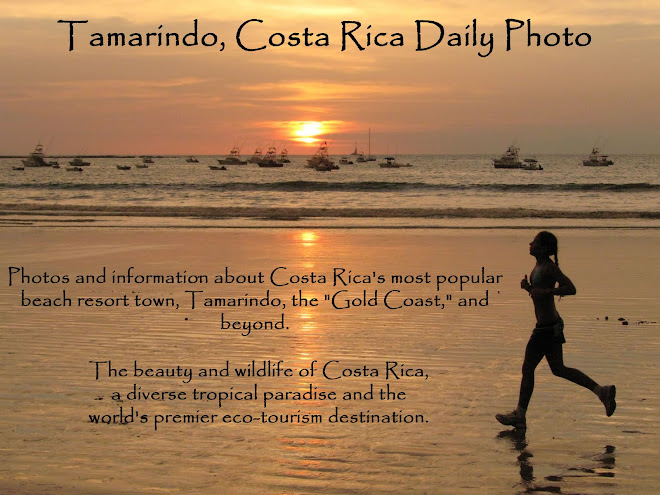 This bare-throated tiger heron was in the bushes along the banks of the Tempisque River in Palo Verde National Park. Hopefully, it will stay clear of the crocodile shown in yesterday's photo.
This bare-throated tiger heron was in the bushes along the banks of the Tempisque River in Palo Verde National Park. Hopefully, it will stay clear of the crocodile shown in yesterday's photo.I assume that the bare-throated tiger heron got its name from the stripes on its back (and, of course, its white throat). It is known locally as the garza-tigre cucillinuda, or garza for short. Its scientific name is tigrisoma mexicanum. It can reach 80 cm (2.7 ft) in length.
Herons are relatives of egrets, such as the snowy egret posted on July 2. The most unusual member of the heron/egret family is the boat-billed heron, which I will show in the future.
Yesterday's and today's photos came from Palo Verde National Park, which is about an hour southeast of Tamarindo. It offers a contrast to Rincon de la Vieja National Park, whose volcanic activity and forests were the subject of the five previous posts. Palo Verde National Park consists of the wetlands and river delta in the area where the Tempisque River flows into the top of the Gulf of Nicoya. It has the largest number of wading birds in Meso-America (the area from Costa Rica through southern Mexico).
Rather than build levees and dams as would occur in industrialized countries such as the USA or China, the Costa Ricans had the wisdom to leave the flood plain as natural wetlands that flood each year and provide habitat for wildlife.
Palo Verde National Park is one of seven sites in Costa Rica that were designated as Wetlands of International Importance by the 1971 International Convention on Wetlands. These sites are are known as "Ramsar Sites," named after the city in Iran where the convention was held (in very different political times).
One of the other Ramsar Sites is right next to Tamarindo -- the Tamarindo Wildlife Refuge, which is the Tamarindo estuary that flows into the ocean along the north edge of the town.

3 comments:
That's a beautiful bird! I've seen a few of its heron/egret cousins out here, but never one as distinctly marked as this tiger egret.
and I forgot to say - Great photo!!!
The bird is so beautiful and a wonderful capture. Again such an interesting post to read on the subject of conservation.
Post a Comment